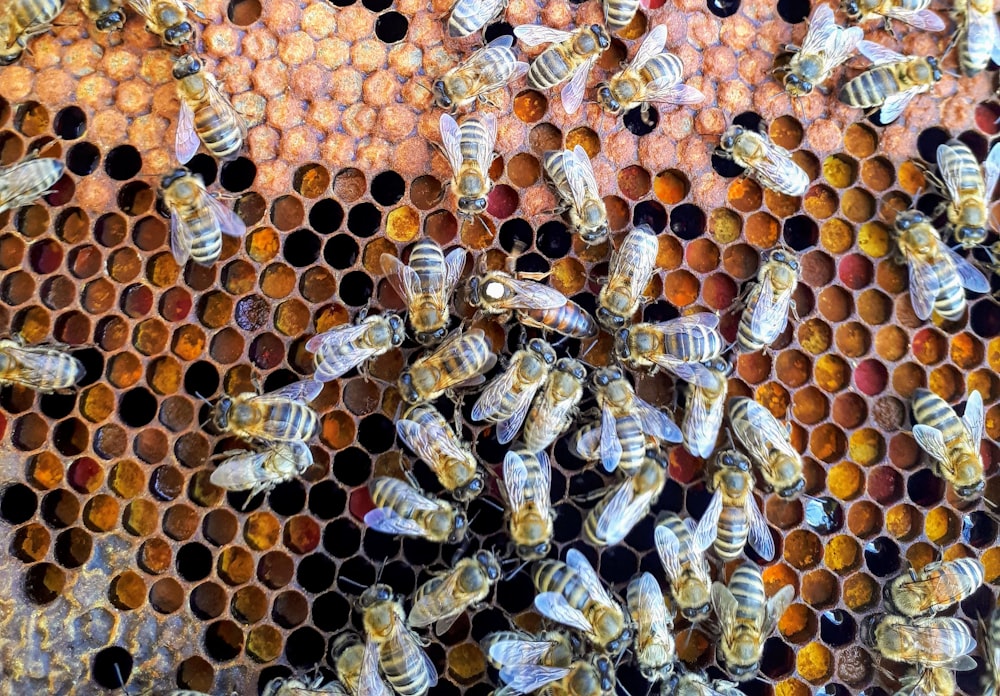The “AMERICAN PLAGUE”, is the largest and most widespread infectious disease that affects the brood of a beehive. The agent responsible for this disease is a spore-forming bacterium Paenibacillus larvae, which causes significant economic losses for beekeeping.
The spores produced by this bacterium are able to resist for several minutes at a temperature of 100°C. Furthermore, after about thirty minutes in a suitable environment, it produces the bacillus which, after only 24 hours in which it has multiplied, manages to originate another 250 million new bacilli.
The spores of this pathology can remain active for more than 30 years inside a hive.
It has been ascertained that at least 50 million spores are needed before the first symptoms of the disease appear. A fairly high number, but actually not so much, as it suffices to think that a larva, which died of American foulbrood, contains more than 3 billion spores inside.
SYMPTOMS:
- High mortality of the brood: the brood does not appear compact with darker opercula and sunken or perforated in the centre. A fetid and acid odor typical of this disease can also be perceived.
- Loss of the pearly white color of the larvae: the larvae tend to initially become yellowish, then taking on a hazelnut color and a viscous and deliquiescent consistency due to the action of some enzymes of the bacterium.
- Dead and dried larvae: 6/7 weeks after infection, the now dead larvae are dried and attached to the wall of the cell in the form of flakes containing a large quantity of spores.
The diagnosis of this disease can be made simply by associating the symptoms with the “toothpick test” which consists in inserting a toothpick inside an infected cell containing the dead larva, if a sticky filament forms when it is removed nut-colored then the hive is most likely infected. In the most doubtful cases, commercial kits or specialized microbiology laboratories can be used.
The only remedy considered effective to date to eradicate the American foulbrood is, unfortunately, the destruction of the hive and the nest. But 2023 starts with good news for beekeepers, especially American ones, as the United States Department of Agriculture (USDA) has licensed a vaccine created by Dalan Animal Health, a US biotech company, to help protect honey bees from American foulbrood.
Bees, like all invertebrates, have an immune system different from the human one, in fact they do not have immune cells but antimicrobial molecules and disease confinement mechanisms, making everything even more interesting is the ability of insects to transmit immunity to their offspring a pathogen through a phenomenon called transgenerational immune priming.
The researchers have in fact exploited the latter phenomenon to their advantage, studying a non-invasive approach to immunize the queen bee.
In 2014, a team of researchers showed that offspring from a queen bee injected with dead P. larvae bacteria were born with better resistance to the disease, even though this approach was dangerous to the queen herself. They then exploited the social behavior of bees, thus arriving at the idea of making the queen take a royal jelly containing dead P. larvae bacteria.
VACCINE ADMINISTRATION
- Vaccine mixed with candy
- The bees feed on the candy containing the vaccine thus forming a royal jelly containing the same vaccine
- With this “modified” royal jelly, the bees of the court feed the queen
- By digesting royal jelly, the queen transfers the vaccine into the ovaries.
- The vaccine has now been transferred to all bees in the nest
- The larvae born are vaccinated and therefore more resistant to the aggression of the P. larvae bacterium
The researchers therefore demonstrated that the administration does not interfere with the vitality of the queen or with the quality of the honey. Furthermore, the vaccine can be administered by the beekeeper himself who is familiar with good beekeeping practices.
Sources:
